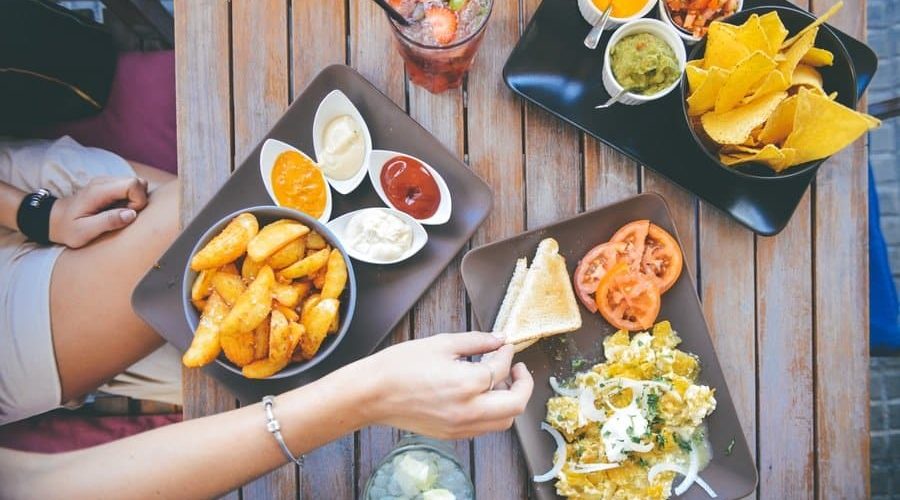This article was last updated on March 14, 2022
While, it isn’t necessarily true that you become what you eat, or that you are what you eat; it is a fact that the food you eat influences your physiology as well as how you feel and think to a large extent. For this reason what we eat and how we eat isn’t only important for people looking to lose weight, but also for those of us looking to live with more vitality and energy.
Developing any new habit takes time and effort, whether it’s waking up early, drinking less alcohol, sticking to an exercise routine or learning to eat healthier and to maintain a rewarding eating schedule.
It’s important to bear in mind that there are no shortcuts, so that we don’t have unrealistic expectations about the goal at hand. However, there are tips and ways to stick to your diet that can make your journey a lot less frustrating and a whole lot easier.
How to Stick to a Rewarding Eating Schedule
1. Know your Why
The very first thing that you do should if you’re serious about changing your eating habit is to spend time and get to know your motivations behind wanting to make a change. At the start of your inquiry, you’ll probably encounter a host of superficial motivations including the desire to look good for a special someone, or to impress your close circle of friends or to win a bet you made with a friend.
While there’s nothing wrong with any one of the motivations I just listed before, they’re not going to give you the fuel to steer the course in the long run.
If you dig deeper and spend some more time, I guarantee you’ll discover a powerful motivation that will help you out of the rut when you need it. It may be because you wish to be fit enough for some new adventure or hobby, or have the energy to play with your kids and be a role model for them or simply because you’re tired of selling yourself short and living under the dominion of ill health and lethargy.
Whatever it is, write it down and have it where you can see it because it’s going to spur you on and keep your head in the game when you’re not up to it.
2. Understand how Weight loss Works
A lot of folks rush into weight loss and make all kinds of positive changes and then stop when they quite seeing the results. This is mostly because they have a vague idea of how weight loss happens and don’t really understand how to keep the ball rolling.
Weight loss is all about successfully creating a caloric deficit, which simply means giving your body fewer calories than it needs. Conversely creating a caloric surplus or eating more calories than the body needs is what causes weight gain.
Depending on your age, height, weight and activity level, you can calculate your Calorie maintenance level, which will tell how many calories your body needs (roughly) to maintain your current weight. Here’s a good resource to calculate your caloric maintenance level.
Once you have this number, all you have to do is decrease 500 calories from your daily total caloric intake. So, if your maintenance level is 2500 calories, you should look to intake 2000 calories.
Why 500 calories? There are roughly 3500 calories in a pound of body fat, so cutting 500 calories daily means you’d lose 1 pound of body fat in a week. And, interestingly, the ideal weight loss rate recommended by most health professional is 1-2 pounds of fat per week. Also, here’s why you don’t want to lose weight too quickly.
Finally, while it is possible to achieve your caloric deficit goals by simply eating less, you’re much better off supplementing your reduced dietary intake with some moderate exercise in the week. Try getting in a few spin biking sessions a week and you’ll find it easier to achieve your calorie deficit goals while staying fit and healthy.
3. Know that there is no Perfect Eating Schedule
Just as there are many proponents of the Atkins diet who claim that it’s the perfect diet for weight loss, there are also a great many people who believe that the Raw Foods diet or the Big Loser’s diet is the perfect diet. In truth, while there may be certain elements of these diets that support weight loss in the short run, such as the restrictive low-carb nature of the Atkins diet which encourages the body to tap into stored fat for energy; in the long run, neither one is ideal.
Perhaps, the most prudent way to approach an eating schedule is to get educated about basic nutrition. This isn’t to say that you shouldn’t consult a nutritionist or a dietician; it’s only to suggest that you invest some time and effort in your own research towards understanding the basic mechanics of food and how it impacts your system.
4. Know you Macros
All nutrients found in foods are either micronutrients or macronutrients. While it pays to understand how both these types of nutrients affect the body, for starters an understanding of the macronutrients is adequate for making better food choices.
The three main macronutrients are:
- Proteins
- Fats and,
- Carbohydrates
All foods contain some degree of proteins, fats and carbs. So, while a can of Tuna may have more protein content, bread and rice has more carbs and dry fruits such as cashews and walnuts have more fat in comparison.
For the majority of people looking to lose some weight while exercising a few times a week, 0.6 -1 gram of protein (10-35% of total caloric intake) per pound of bodyweight is adequate. As for the amount of fat you should eat, anywhere between 20-30% of your total caloric intake is a good amount. And, finally the remaining calories can come from carbs (45-65% of total caloric intake). For more information on the prior mentioned percentages, refer to these dietary guidelines for Americans.
5. Healthy vs. Unhealthy
Okay, so it’s clear that all foods contain some degree of each of the 3 big macronutrients. But, how you do figure which foods contain the best quality of these macronutrients. The quality of macronutrients depends on the type of food and the quality of the food.
Foods such as processed foods are stripped of their vital nutrients (vitamins and minerals) and have exaggerated amounts of macronutrients as a result of this. So, it’s easy to see why a diet consisting heavily of processed foods would be unhealthy. Add to this some preservatives and chemicals as well as artificial sweeteners and you now have food that is engineered to cause harm. In short avoid and limit, consumption of cakes, cookies, biscuits, chips, sugary sodas, fried foods, fast foods and anything with a long shelf life.
Just as harmful as processed foods, if not more harmful is poultry and meat from farms where animals are raised on unnatural diets and injected with steroids and growth hormones for more yield.
The best quality of macronutrients can be found in organic fruits and vegetables that are grown without pesticides and fertilizer and meats from farms where animals are allowed to roam free and eat a natural diet.
6. Benefits of Meal Preparation
Okay, so now that you have a pretty good idea of the quantity and type of foods you would benefit from eating, let talk about meal preparation. One of the leading reasons that people fail to stick to a healthy eating schedule is because they don’t have healthy foods within their reach. You’re fridge and cupboard may well be stacked with fresh whole foods, but if you don’t prepare them for consumption they’re not going to do you much good.
Taking an hour daily or a couple hours on the weekend to prepare your meals for the week ahead can be hugely rewarding. Not only will this meal preparation ensure that you have healthy meals to eat, it’ll also keep your cravings for junk in check and stop you from reaching for fast foods on the go. Here are some healthy and easy meal prep ideas to get you started.
7. Clean Out your Cupboard
Just as important as timely meal preparation is not having a ton of junk food in the house. When you have all kinds of tasty treats within your reach, it’s just that much harder to control your urges and cravings. If you have kids around and it’s not practical to eliminate all the goodies, give them a key and tell them to keep the cupboard locked, so you don’t have the luxury of the making any excuses late at night.
8. Cheat in Moderation
It’s only natural to experience cravings when you’re changing your eating habits, so don’t be too hard and militant with yourself. It’s quite okay to indulge in your favorite food from time to time. However, if you’re going to cheat everyday or even on the weekends, do so in moderation. Remember that weight loss is a game of calories and that it’s most likely that you’re favorite food even in small quantities is extremely high in calories.
So, while you should give yourself some leeway to eat what you enjoy, try not to end up finishing the entire packet or jar before you stop. Moderation and balance are one of the harder lessons learned in life, but they pay huge dividends for those who learn in time.
9. Keep Track
Find motivation in your progress. You’ll know you’re progressing when you continue to lose weight, and start to feel greater energy and vitality. Keep a weighing scale in the bathroom and a food journal on your bedside table. The scale will tell you without a doubt whether you’re making progress and your journal will help you keep track of your eating schedule as well as help you stay consistent.
Remember to weight yourself in the morning after your visit the toilet and not in the middle of the day. Also, you only need to check your weight once in the week, since it’s going to take at least a week to lose 1-2 lbs of weight. And, before you sleep, make a habit of writing down what you ate in the day.
10. Take it Easy
In the process of sticking to a healthy eating schedule you will experience ups and downs, inspiration and frustration, so it’s important to believe in yourself and in the process.
In the long run, changing our eating habits is not so much about restricting certain foods as it is about inculcating a taste for healthy, wholesome foods and an understanding of how eating well can change our experience of life for the better. So, don’t worry if you cheat every now and then and go off the path, but take it easy and be gentle with yourself as you continue to make positive changes to your diet.





